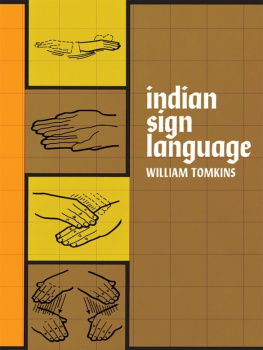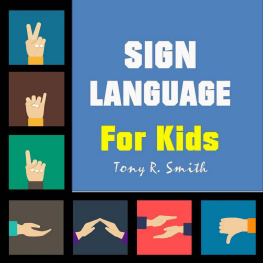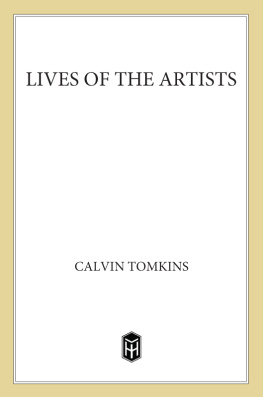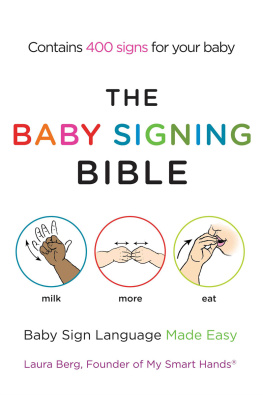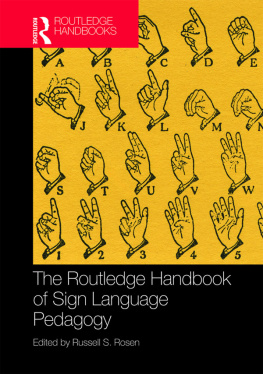COPYRIGHT 1969 BY DOVER PUBLICATIONS, INC.
All rights reserved.
This Dover edition, first published in 1969, is an unabridged and corrected republication of the 1931 fifth edition of the work originally published by the author in San Diego, California, under the title Universal Indian Sign Language of the Plains Indians of North America.
International Standard Book Number
9780486130941
Library of Congress Catalog Card Number: 69-13654
Manufactured in the United States by Courier Corporation
22029X32
www.doverpublications.com
THE VICE PRESIDENTS CHAMBER WASHINGTON
September 28, 1929.
My Dear Tomkins:
I have your letter of recent date and was very glad to hear from you.
I assure you it was a pleasure to meet you and Mrs. Tomkins while you were in Washington.
I want to congratulate you upon the good work you are doing to perpetuate the Indian Sign Language. Your book on Universal Indian Sign Language should be of great service to the Boy Scouts and I know it will be greatly appreciated by all who would like to see the Indian Sign Language perpetuated.
With kindest regards, I am
Very truly yours,
CHARLES CURTIS.
William Tomkins,
2 Park Avenue,
New York, N. Y.
SMITHSONIAN INSTITUTE
BUREAU OF AMERICAN ETHNOLOGY
WASHINGTON
Dear Mr. Tomkins:
I have read your most interesting and instructive book, Universal Indian Sign Language, and consider it to be easily the best work of a practical nature that has been written on this subject. I did not think you would be able to improve upon the old book, but you have managed to do so.
The value of this work as a practical working text for Scouts cannot be overestimated. I am particularly pleased with the way in which you have retained only signs of true Indian origin, while at the same time making them practicable for modern use.
The chapters on pictography and ideographic writing furnish corollary topics which add to the interest and widen the usefulness of the book.
I feel that through the Boy Scouts and similar organizations your book will perpetuate one of the most interesting and characteristic cultural contributions of the aboriginal American.
Sincerely yours,
M. W. STERLING, Chief.
INTRODUCTORY NOTES
When a boy, from 1884 to 1894, the author lived on the edge of the Sioux Indian Reservation in Dakota Territory, located at Fort Sully, Cheyenne Agency, Pierre, and surrounding sections. He worked on the cow range and associated continuously with Indians. He learned some of the Sioux language, and made a study of sign. Since then, for many years, the interest has continued, and all known authorities on sign have been studied, as well as continued investigations with Blackfoot, Cheyenne, Sioux, Arapahoe, and other Indians of recognized sign-talking ability.
Of later years this effort has been inspired by the fact that there does not exist today any publication in print that can readily be obtained, covering exclusively the so-called Universal Indian Sign Language of the Plains Indians of North America.
There is a sentiment connected with the Indian Sign Language that attaches to no other. It is probably the first American language. It is the first and only American universal language. It may be the first universal language produced by any people. It is a genuine Indian language of great antiquity. It has a beauty and imagery possessed by few, if any, other languages. It is the foremost gesture language that the world has ever produced.
The author has lectured on Indian problems to many audiences, and at all times the keenest interest was shown in sign language demonstrations, and he has been requested, hundreds of times, to make the record permanent, and to thereby preserve and perpetuate the original American language which otherwise is fast passing away. This is shown by the fact that in 1885 Lewis F. Hadley, at that time a foremost authority on sign, claimed that as a result of extensive investigation he had determined that there were over 110,000 sign-talking Indians in the United States. Today there is a very small percentage of this number, due to the inroads of modern education, and many of our Indians, with college and university training, can speak better English than they can talk sign. This language was not created by anybody living today. If it belongs to anybody it belongs to Americans, and it is for the purpose of having it carried on by the youth of the United States that this little volume is compiled.
Very few works on the Indian Sign Language have ever been published. The first of importance was by Major Stephen H. Long in 1823, and gave about 100 signs. It is long since out of print.
In 1880 and 1881 Lieut.-Col. Garrick Mallery, writing for the Bureau of American Ethnology of the Smithsonian Institute, produced two valuable works, entitled, Gesture Signs and Signals of the North American Indians, and Sign Language Among the North American Indians. These were partially illustrated and are now out of print.
The next, and by far the most authoritative, work on Indian Sign Language was by Captain Wm. Philo Clark, U. S. Army. He was with the army in the Indian country from 1875 to 1880, and made a deep study of sign, with the result that in 1880 he was detailed by his commanding general to devote his time exclusively to the production of a book on same. He worked steadily on its preparation until 1884, when he died. The work was published in 1885, a small edition, and is now out of print and extremely difficult to obtain. It was not illustrated. This being Americas leading authority on Indian sign, and differentiating as to the true Indian and deaf and dumb codes, the author has consulted it extensively in checking against his personal knowledge and studies extending over many years.










